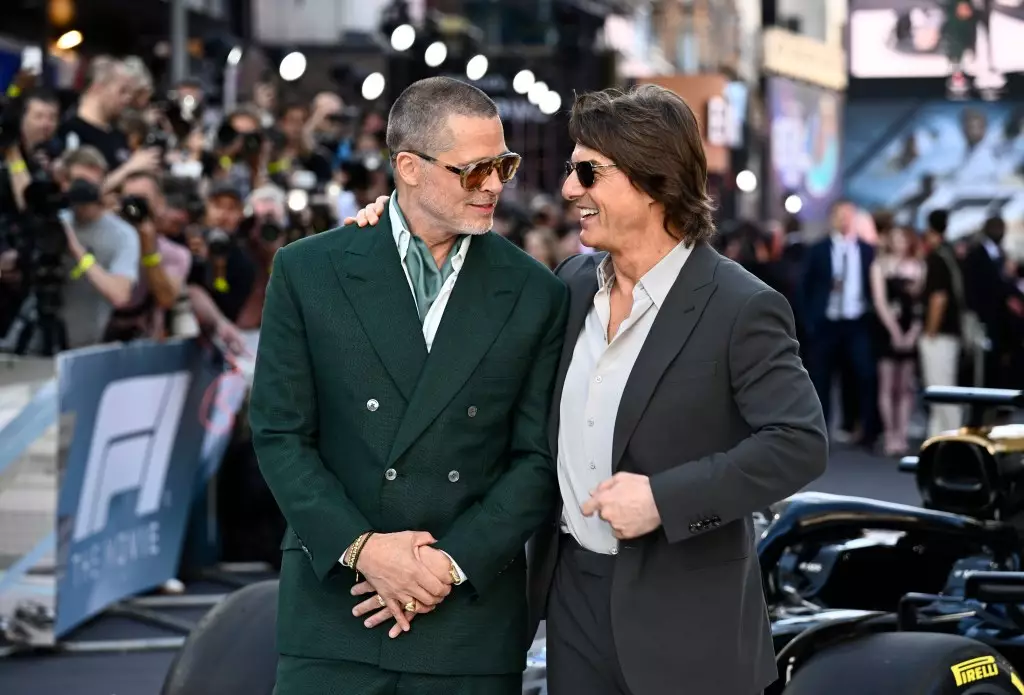Hollywood’s obsession with high-octane storytelling often masks a fundamental reality: even the most promising projects are vulnerable to internal conflicts and external pressures. The early plans to bring Ford v Ferrari to life, featuring Brad Pitt and Tom Cruise, exemplify this tragic fragility. These actors, both icons of their generation, initially envisioned a version driven by authentic passion—aspiring to embody legendary figures like Carroll Shelby and Ken Miles. However, behind the glossy veneer of stardom lay the harsh truth of Hollywood’s relentless mechanics. Budget constraints, political disagreements, and studio apprehensions emerged as the primary culprits that derailed these dream projects before they could even accelerate.
What is particularly revealing about this story is how talent alone isn’t enough to guarantee creative success. Pitt and Cruise, both highly accomplished actors with a knack for choosing compelling projects, signaled a sincere interest in authentic storytelling. Yet, their visions were repeatedly stifled before reaching the finish line. The notion that their combined star power could surmount studio objections proved naïve. More often than not, financial concerns and market considerations take precedence over artistic ambition. This reality exposes Hollywood’s struggle to balance creative passion with economic pragmatism—a tension often hidden behind the glamour.
The False Promise of Authenticity in Blockbusters
The eventual success of Ford v Ferrari in 2019, helmed by James Mangold, belies the turbulent origins of its conception. The film’s alignment with widespread interests in motorsport and nostalgia for classic racing legends allowed it to find its audience. Yet, the behind-the-scenes story indicates that creative authenticity was a casualty of studio negotiations. Director Joseph Kosinski, who had once been linked to the project, revealed that budget constraints prevented the original vision from materializing. Hollywood’s obsession with safety and profitability often suppresses bold, innovative ideas in favor of formulas with guaranteed returns.
This compromises the essence of what makes storytelling compelling—trusting artists to take risks and challenge norms. By focusing rigidly on budget and box office potential, studios risk watering down narratives and diluting their emotional impact. The message here is clear: Hollywood, despite its glitz, often sidelines genuine artistry in pursuit of short-term gains. It underscores a disturbing pattern where Hollywood’s so-called “creative freedom” is conditioned by the cold calculus of profit.
Guilt and Regret: The Personal Cost of Hollywood’s Commercial Mandates
Brad Pitt’s reflections reveal the personal toll this process takes on actors who yearn for authentic performances. His desire to revisit racing roles stems from a longing to connect with an activity he genuinely admires—F1 racing. Yet, he recognizes that studio and financing limitations impose restrictions that cut deep into the creative process. This disconnect between artistic aspiration and commercial realities fosters a landscape of regret and unfulfilled potential.
Moreover, Pitt’s comments about focusing on the fictionalized F1 sequel reflect a nuanced understanding of Hollywood’s limitations. While he remains enthusiastic about the genre, he is also painfully aware that projects are often shaped more by financial strategies than by the stories they seek to tell. His candid admission that Sonny (his character) might be playing in entirely different settings, like Bonneville Salt Flats, highlights the fragmentation of true storytelling in contemporary Hollywood—where characters and plots are often malleable, dictated by market forces rather than narrative integrity.
The Future of Racing Films: A Promise or a Mirage?
Looking ahead, the allure of a racing film that captures raw authenticity persists. Kosinski’s remarks about a potential sequel to Ford v Ferrari suggest that there is still a desire to tell stories that resonate beyond spectacle. But these ambitions are tempered by the reality that Hollywood’s economic imperatives continue to act as insurmountable barriers. The question remains: can films that prioritize emotion, technical authenticity, and deep storytelling survive in an industry obsessed with franchises and blockbuster formulas?
The truth is, unless Hollywood seriously rethinks its priorities—valuing artistic integrity as much as profitability—such projects will remain elusive or compromised. Surprisingly, the very industry that propagates fantasies of control and mastery over storytelling often ends up thwarting the most compelling narratives—those rooted in real passion and genuine risk. The potential of films like these to inspire, challenge, and unite audiences hinges on whether Hollywood can learn to prioritize artistry over immediate profits, even if just for a few daring projects.


Leave a Reply